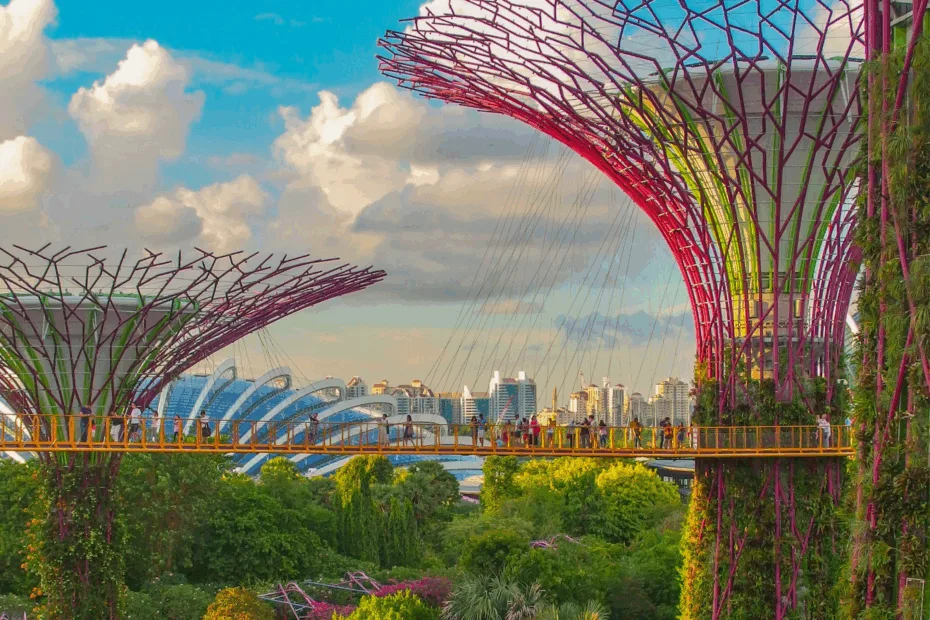This guest blog is by John Newbigin, the Mayor of London’s Ambassador for the Creative Industries. John is a member of the Global Creative Economy Council. The opinions are those of the author and do not necessarily represent the views of Creative PEC.
If a ‘market’ is defined by the number of potential consumers it can access, what’s the third biggest market in the world? The answer may be a surprise; it’s ASEAN – the Association of South-East Asian Nations – Malaysia, Singapore, Indonesia, Thailand, Vietnam, Cambodia, Laos, Philippines, Myanmar, Brunei – with a combined population of almost 700 million. The ten countries vary enormously in size, ethnicity, politics and levels of wealth and development. Their combined cultural heritage is incomparably rich and varied – Indonesia alone has 700 living languages. They disagree about a lot and two of them were recently on the brink of war. They have no intention of becoming a sort of Asian version of the EU, although the ASEAN machinery certainly has echoes of Brussels with its jumble of committees, an alphabet soup of acronyms and some tortuously bureaucratic processes. But for all that, it works. And, unlike the EU, ASEAN is growing in confidence and ambition, seeing itself more and more as a distinct region, carving out its own path in order to distinguish itself from its two immensely powerful neighbours – China on one side and India on the other.
Developing a sustainability framework
One of its ambitions is to be a world leader in the creative economy by 2045. It’s developing a ‘sustainability framework’ so that progress towards that goal can be realistic and systematic. The ten States see their diversity as an asset rather than a problem, with some viewing their creative economy in terms of traditional crafts and cultural tourism, while others are already significant global players in digital content and creative services, including some highly specialised niche markets (I recently learnt that if you want to make a shampoo commercial, the best place in the world to go is Bangkok where a group of companies have developed a particularly effective and cost-effective technology for the digital rendition of hair – who knew?). Some have burgeoning youth populations while others have already hit the declining birth rates and aging populations of more developed economies. But even in the febrile environment of today’s global economy with its fragmenting trade rules and the chaos of Trump’s random tariffs, the ASEAN States are moving towards becoming an integrated market, with increasingly sophisticated economies and an aspirational and outward-looking urban middle class.
Ten guiding principles
One of the most remarkable features of their creative economy ‘sustainability framework’ is what its authors call a ‘multi-stakeholder’ approach, spelt out in one of its ten ‘guiding principles’ as: “Every government Ministry has a role in building a creative economy, and every Ministry can benefit”. They see that growing the creative economy is about something much more comprehensive than a focus on GDP or an add-on job for the Ministry of Culture – it’s about addressing a spread of social, cultural and environmental challenges. The ten ‘guiding principles’ suggest that good creative economy policies must “seek to promote social inclusivity, not exclusivity”, “protect and, where possible, contribute to the health of the planet” and “draw from the skills and culture of the past to build a sustainable future”. These are not empty words in a region that is emphatically on the frontline when it comes to the impact of climate change, is wrestling with major issues of social inclusion for women, young people and its many indigenous communities, and in which the acceleration of urban living, the ubiquity of the online world and the growth of mass tourism threaten unique traditions of making, performance and – of course – gastronomy. The only way to engage with this breadth of challenges, and to resist the whole strategy becoming top-down, is summed up in the tenth of the guiding principles: “Successful outcomes for national and regional strategies are most often achieved by practical initiatives at local level.”
The real foundation of a creative economy
This multi-agency, multi-purpose and bottom-up approach grows out of a sense, much stronger in the ASEAN region than it is in Europe, that creative communities and local culture are the real foundation of a creative economy. The starting point of Indonesia’s 200-strong ‘Creative Cities Network’ was that, to be of real value to society, initiatives had to be built with a ’pentahelix approach’. In other words, have five active players: community, government, business, academia – and media (this last being an element we in the UK too often assume to be active opposition rather than positive contributor). More recently, a sixth element has been added to make it a ‘hexahelix approach’; the sixth element being the ‘intermediaries’ or ‘aggregators’ that are the essential interpreters between government and a rapidly-evolving and ill-defined sector made up of myriad freelancers, micro-businesses and informal community organisations – our very own ‘Creative UK’ being one such.
An evolving concept
The UK has played an active role in the evolution of creative economy thinking in the region, primarily through the work of the British Council and, more recently, by the UK government uprating its level of engagement – 2026 will see the fourth anniversary of an accord which included Britain appointing an ambassador to the ASEAN as well as to each of its constituent States. UK policies and the research papers of the Creative PEC and, before that, Nesta, have also had significant impact on the way policy and practice is playing out in the region. But there’s no doubt that the South-East Asia region, like South Korea, is proving the truth of UNCTAD’s observation that the creative economy is an “evolving concept.” Watch this space.
Photo by Coleen Rivas on Unsplash
